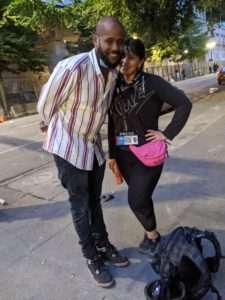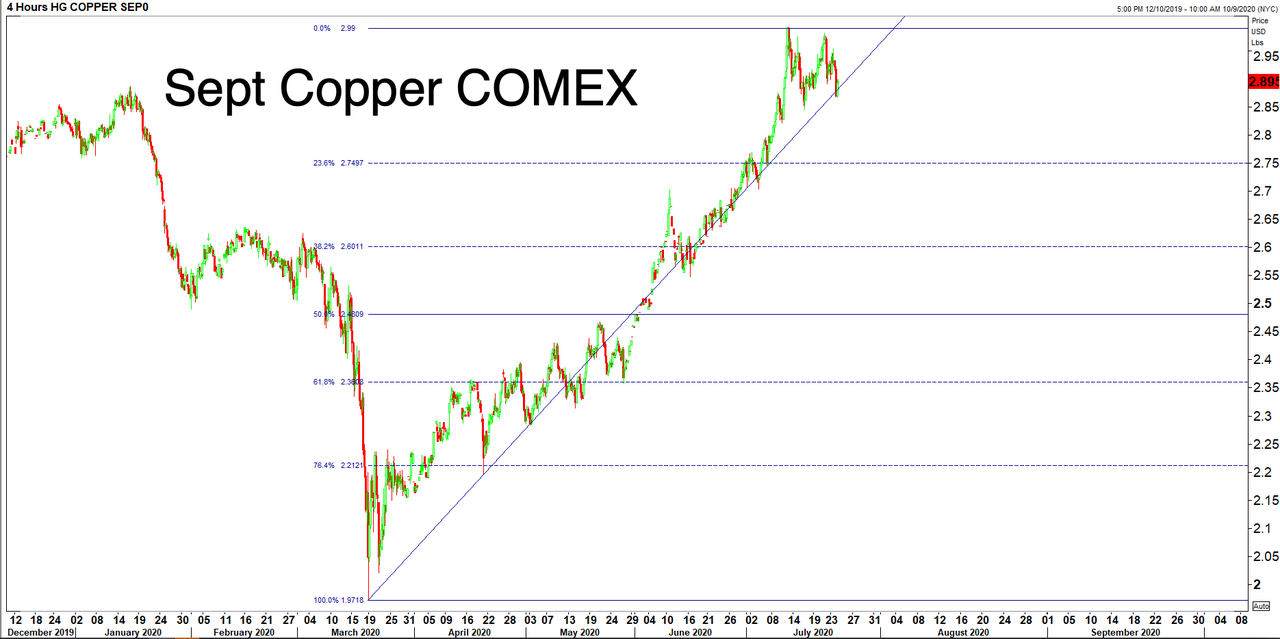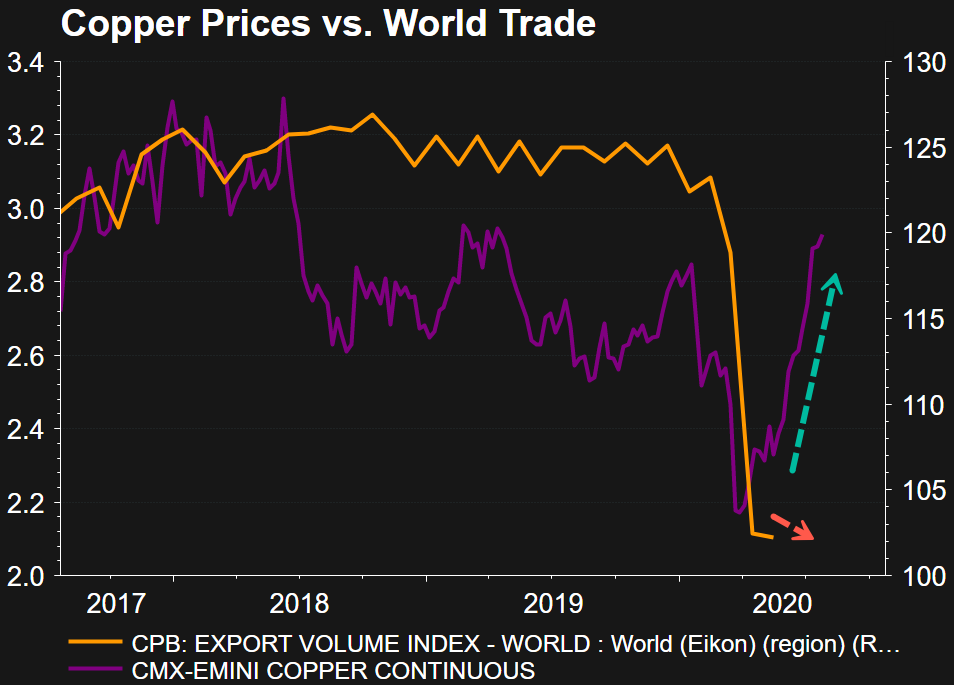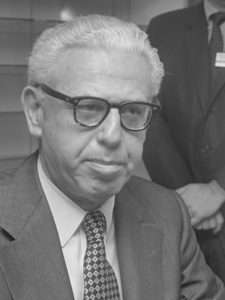In Nevada, restaurants, bars, casinos, and gyms are allowed to operate at 50% of their capacity. However, houses of worship are capped at fifty people, regardless of their capacity. On May 22, 2020, the Calvary Chapel Church in Nevada challenged the Governor’s emergency directives. The district court denied a TRO on June 11. The church appealed to the Ninth Circuit. That appeal was denied on July 2. On July 8, the church filed an application for injunctive relief with the Supreme Court. The briefing on that case concluded on July 16. Eight days later, the Supreme Court denied the application in Calvary Chapel Dayton Valley v. Sisolak, an unsigned per curiam opinion. Justices Thomas, Alito, Gorsuch and Kavanaugh dissented, and would have granted the injunction. By the process of elimination, we can conclude that Chief Justice Roberts, joined by Justices Ginsburg, Breyer, Sotomayor, and Kagan voted to deny the injunction.
Two months ago, the Supreme Court decided a similar case, South Bay United Pentecostal Church v. Newsom. I blogged about South Bay here, here, here, and here. (Both cases were decided late on a Friday night; query if the Justices hold controversial per curiam orders till after the news cycle closes). In South Bay, Chief Justice Roberts wrote a opinion concurring in judgment that laid out some principles why Courts should defer to local governments during the pandemic. Justices Kavanaugh wrote a dissent in South Bay. In Calvary Chapel, however, Chief Justice Roberts did not write separately. He did not attempt to square his South Bay analysis with the facts in Nevada. And the Calvary Chapel dissenters highlight Roberts’s inconsistency.
This post will walk through the dissents. I will start with Justice Kavanaugh’s dissent, which I consider the strongest of the three.
Justice Kavanaugh’s Dissent
In the two months since South Bay, Justice Kavanaugh has done his homework. His dissent carefully explains why Nevada’s order is unconstitutional. And he builds upon his South Bay dissent in important ways. I think this opinion is his strongest effort since he joined the Court. He brings a clarity to this litigation that has been sorely lacking. Part I of his opinion is six pages. I encourage you to read the entire section. Here, I will briefly summarize it.
Kavanaugh identifies four categories of religion cases:
(1) laws that expressly discriminate against religious organizations; (2) laws that expressly favor religious organizations; (3) laws that do not classify on the basis of religion but apply to secular and religious organizations alike; and (4) laws that expressly treat religious organizations equally to some secular organizations but better or worse than other secular organizations.
The first category include relatively straightforward Free Exercise Clause cases; for example, Espinoza and Trinity Lutheran. The second category includes more complex Establishment Clause cases. Think of Walz v. Tax Commissioner and Kiryas Joel. This second category also includes cases involving the ministerial exception (Our Lady of Guadalupe) and statutory exemptions (RFRA or RLUIPA). And, there may be some cases where a facially neutral law is motivated by animus (Lukumi).
The fourth category is the most significant, and relevant to the COVID litigation. Kavanaugh explains:
Fourth are laws—like Nevada’s in this case—that supply no criteria for government benefits or action, but rather divvy up organizations into a favored or exempt category and a disfavored or non-exempt category. Those laws provide benefits only to organizations in the favored or exempt category and not to organizations in the disfavored or non-exempt category.
I have described the COVID orders in very similar terms. The decision to slot some secular activities into the favored category, and religious activities into the disfavored category, reflects an unstated value judgment.
Governors are making “value judgments” about the importance of religious worship. They have deemed it unimportant. They have decided that “Churches can feed the spirit” over Zoom. We need Amazon Prime, but receiving communion and reciting the mourner’s Kadish aren’t essential.
Those “value judgements” are far worse than any of the errant statements made in Masterpiece Cakeshop. The comparison of houses of worship to other facilities has always been a red herring. Chief Justice Roberts will be forced to confront these arguments soon enough.
Kavanaugh makes this point forcefully. He writes:
Nevada’s rules reflect an implicit judgment that for-profit assemblies are important and religious gatherings are less so; that moneymaking is more important than faith during the pandemic.
I wholeheartedly agree. Kavanaugh explains that the starting point is that religious institutions should be given the same favorable status that other organizations are given. This principle should be the default rule. To depart from this default rule, the state needs to provide a sufficient justification. Here, Kavanaugh relies on Professor Laycock’s important work:
Unless the State provides a sufficient justification otherwise, it must place religious organizations in the favored or exempt category. See Laycock, The Remnants of Free Exercise, 1990 S. Ct. Rev. 1, 49–50 (ex-plaining how this Court’s precedents grant “something analogous to most-favored nation status” to religious organizations)…. Put simply, under the Court’s religion precedents, when a law on its face favors or exempts some secular organizations as opposed to religious organizations, a court entertaining a constitutional challenge by the religious organizations must determine whether the State has sufficiently justified the basis for the distinction.
Kavanaugh provides a two-step framework. This approach crystallizes how I have long thought about the COVID cases:
First, does the law create a favored or exempt class of organizations and, if so, do religious organizations fall outside of that class? That threshold question does not require judges to decide whether a church is more akin to a factory or more like a museum, for example. Rather, the only question at the start is whether a given law on its face favors certain organizations and, if so, whether religious organizations are part of that favored group.
Here, Kavanaugh lays bare the weakness of Roberts’s South Bay decision. There are always ways you can compare and contrast different establishments. Slice and dice! Churches are like nail salons! But the Free Exercise Clause does not resemble a routine employment discrimination case, where you seek to identify comparators. I observed last month:
It is a mistake to simply assess how “comparable” businesses are treated. This method reminds me of a routine feature of employment law. For example, a hispanic female alleges that she was denied a promotion because of her ethnicity. However, the employer responds that a similarly-situated hispanic female was given a promotion; therefore, the argument goes, the plaintiffs was denied the promotion for legitimate reasons. The parties will invariably dispute about whether the individuals are similarly situated: they have different roles, different levels of experience, etc. The Free Exercise Clause should not turn on this sort of ad hoc balancing test. Cases like Masterpiece Cakeshop suggest a far more skeptical standard of review is appropriate. Comparing churches to nail salons is a red herring.
Next, Kavanaugh moves to the second step of the inquiry.
If the religious organizations are not [favored], the second question is whether the government has provided a sufficient justification for the differential treatment and disfavoring of religion.
In other words, if the religious institution is denied the favored status, the state needs to justify that denial. Kavanaugh frames the burden in terms of a “sufficient justification.” I think strict scrutiny is warranted. (And Kavanaugh joins Alito’s dissent, which applies strict scrutiny; more on that later.) But I’ll go along with his framework. He describes the burden this way:
To that end, the government must articulate a sufficient justification for treating some secular organizations or individuals more favorably than religious organizations or individuals. See Smith, 494 U. S., at 884. That point is subtle but absolutely critical. And if that point is not fully understood, then cases of this kind will be wrongly decided.
He’s right. If you don’t understand this dichotomy, then the COVID cases do not make sense. Judge Easterbrook, for example, bought into the Chief Justices’s misguided approach. Kavanaugh nailed it.
Once you understand this framework, Nevada’s order is plainly unconstitutional:
The State has not explained why a 50% occupancy cap is good enough for secular businesses where people congregate in large groups or remain in close proximity for ex-tended periods—such as at restaurants, bars, casinos, and gyms—but is not good enough for places of worship. Again, it does not suffice to point out that some secular businesses, such as movie theaters, are subject to the lesser of a 50-person or 50% occupancy cap. The legal question is not whether religious worship services are all alone in a disfavored category, but why they are in the disfavored category to begin with.
Kavanaugh concludes:
Nevada’s 50-person attendance cap on religious worship services puts praying at churches, synagogues, temples, and mosques on worse footing than eating at res-taurants, drinking at bars, gambling at casinos, or biking at gyms. In other words, Nevada is discriminating against religion. And because the State has not offered a sufficient justification for doing so, that discrimination violates the First Amendment. I would grant the Church’s application for a temporary injunction.
Alas, Chief Justice Roberts did not confront Kavanaugh’s powerful dissent. He simply ignored it. Roberts, never one to mince words, was silent. Towards the end of his opinion, Kavanaugh twists the knife. He writes:
This Court’s history is littered with unfortunate examples of overly broad judicial deference to the government when the government has invoked emergency powers and asserted crisis circumstances to override equal-treatment and free-speech principles. The court of history has rejected those jurisprudential mistakes and cautions us against an unduly deferential judicial approach, especially when questions of racial discrimination, religious discrimination, or free speech are at stake.
The reference to the “court of history” is obvious. Here, Kavanaugh is silently assailing the Chief Justice’s majority opinion in Trump v. Hawaii. (That case was decided before Kavanaugh joined the Court.) In that case, Chief Justice Roberts purported to overrule Korematsu, a case in which the “government has invoked emergency powers and asserted crisis circumstances to override equal-treatment.” Roberts quoted from Justice Jackson’s Korematsu dissent.
The dissent’s reference to Korematsu, however, affords this Court the opportunity to make express what is already obvious: Korematsu was gravely wrong the day it was decided, has been overruled in the court of history, and—to be clear— “has no place in law under the Constitution.” 323 U.S., at 248, 65 S.Ct. 193 (Jackson, J., dissenting).
Kavanaugh didn’t cite Roberts’s opinion. But the reference to the “court of history” is obvious. He was calling the Chief out on his double-standard. What term should we use when a Justice references a case another Justice wrote, in a critical fashion, but does not cite it to be passive aggressive? Kind of like a subtweet. Maybe call it a subcite?
In any event, Chief Justice Roberts truly has no response to the junior justice. The limiting principle he identified in South Bay may have superficially worked in that case, but it doesn’t work as the lockdowns continue, and more businesses are allowed to open.
Justice Gorsuch’s Dissent
Justice Gorsuch did not join Justice Alito’s dissent, or Justice Kavanuagh’s dissent. Instead, he wrote a single paragraph without any case citations. It begins:
This is a simple case.
No, it’s not simple. This case is hard. I think the church wins for the reasons Kavanaugh identifies, but there is a lot of analytical work to reach that conclusion. Justice Gorsuch can’t start the case at First and Goal.
Far too often, Justice Gorsuch insists difficult cases are really easy. He used similar language in Bostock:
The [Civil Rights Act of 1967’s] message for our cases is equally simple and momentous: An individual’s homosexuality or transgenderstatus is not relevant to employment decisions.
(I wrote about Bostock, as well as McGirt, in the Atlantic).
When Justice Gorsuch says a case is “simple,” that is a tell that the case is tough. Rhetoric cannot replace rigor. Justice Gorsuch would be well-served to check his over-confidence. He should start by removing the word “simple” from his vocabulary. Issues that percolate to the Supreme Court are there precisely because they are not “simple.” This case warranted more attention than a single, citationless paragraph–even one I ultimately agree with.
Justice Alito’s dissent
Justice Alito’s dissent was joined by Justices Thomas and Kavanaugh but not Justice Gorsuch. It’s not clear that Justice Gorsuch would have disagreed with anything Alito said. Rather, Gorsuch thought the case was “simple,” and could be resolved without discussing any cases.
Justice Alito did not join Justice Kavanaugh’s dissent in South Bay. At the time I speculated why. After reading this decision, I think he needed more time to put together his own approach to these cases. And the delay was worth the wait.
First, Alito echoes a point I have made in several presentations. As time elapses, emergency measures must become more narrowly tailored. What sufficed in March and April becomes unjustified in May and June.
As more medical and scientific evidence becomes available, and as States have time to craft policies in light of that evidence, courts should expect policies that more carefully ac-count for constitutional rights. Governor Sisolak issued the directive in question on May 28, more than two months after declaring a state of emergency on March 12. Now four months have passed since the original declaration. The problem is no longer one of exigency, but one of considered yet discriminatory treatment of places of worship.
Justice Alito next considers the Free Exercise Clause. He contends that the Governor’s directive is not “neutral” under Lukumi.
Here, the departure is hardly subtle. The Governor’s directive specifically treats worship services differently from other activities that involve extended, indoor gatherings of large groups of people.
The neutrality determination is somewhat circular. “Neutral” with respect to what? Are churches and casinos analogous? The state argues that casinos are heavily regulated in ways that churches are not. Perhaps, then churches, should be compared more closely to movie theaters? I do not find this counterargument persuasive, but it highlights weaknesses in Alito’s position. Indeed Alito’s position buys into Roberts’s dichotomy. I much prefer Justice Kavanaugh’s fourth category. Indeed, I’m not sure how Kavanaugh joined this portion of Alito’s dissent.
Once Justice Alito finds the law is not neutral, he reviews the directive with strict scrutiny. And he explains, with clarity, why the directive is not narrowly tailored.
Thus, while Calvary Chapel cannot admit more than 50 congregants even if families sit six feet apart, spectators at a bowling tournament can sit together in groups of 50 pro-vided that each group maintains social distancing from other groups.
In sum, the directive blatantly discriminates against houses of worship and thus warrants strict scrutiny under the Free Exercise Clause.
Justice Alito also addresses the Free Speech Clause. Justice Alito writes that discrimination against religion is a form of viewpoint discrimination.
Laws that restrict speech based on the viewpoint it expresses are presumptively unconstitutional, and under our cases religion counts as a viewpoint, Rosenberger v. Rector and Visitors of Univ. of Va., 515 U. S. 819, 831 (1995). Here, the Directive plainly discriminates on the basis of viewpoint. Compare the directive’s treatment of casino entertainment and church services. Both involve expression, but the directive favors the secular expression in casino shows over the religious expression in houses of worship.
Alito directly references the recent protests, which were permitted:
Calvary Chapel has also brought to our attention evidence that the Governor has favored certain speakers over others. When large numbers of protesters openly violated provisions of the Directive, such as the rule against groups of more than 50 people, the Governor not only declined to enforce the directive but publicly supported and participated in a protest. Cf. Masterpiece Cakeshop, 584 U. S., at ___–___ (slip op., at 14–16).
Here, the Governor simply find protest more important:
Public protests, of course, are themselves protected by the First Amendment, and any efforts to restrict them would be subject to judicial review. But respecting some First Amendment rights is not a shield for violating others. The State defends the Governor on the ground that the protests expressed a viewpoint on important issues, and that is undoubtedly true, but favoring one viewpoint over others is anathema to the First Amendment.
I made a similar point last month:
This double-standard became patently obvious in the wake of recent protests. Officials like NYC Mayor DeBlasio expressly stated that the protests were far more important than prayer.
This argument will have extra relevance in the future free speech challenges. For example, Mayor DeBlasio’s preference for certain types of public gatherings (protests) over other types of gatherings (prayer). Justice Kavanaugh’s dissent also referenced speech, briefly.
There are certain constitutional red lines that a State may not cross even in a crisis. Those red lines include racial discrimination, religious discrimination, and content-based suppression of speech.
But here he described “content-based” discrimination rather than viewpoint-discrimination.
Finally, Justice Alito explains why Jacobson v. Massachusetts is not relevant to a First Amendment case.
And in any event, it is a mistake to take language in Jacob-son as the last word on what the Constitution allows public officials to do during the COVID–19 pandemic. Language in Jacobson must be read in context, and it is important to keep in mind that Jacobson primarily involved a substantive due process challenge to a local ordinance requiring residents to be vaccinated for small pox. It is a considerable stretch to read the decision as establishing the test to be applied when statewide measures of indefinite duration are challenged under the First Amendment or other provisions not at issue in that case.
Judge Collins (CA9) expanded upon this point:
As the Second Circuit has recognized, Jacobson merely rejected what we would now call a “substantive due process” challenge to a compulsory vaccination requirement, holding that such a mandate “was within the State’s police power.” …
Jacobson had no occasion to address a Free Exercise claim, because none was presented there. (That is unsurprising, because the Free Exercise Clause had not yet been held to apply to the States when Jacobson was decided in 1905. See Phillips, 775 F.3d at 543.) Consequently, Jacobson says nothing about what standards would apply to a claim that an emergency measure violates some other, enumerated constitutional right; on the contrary, Jacobson explicitly states that other constitutional limitations may continue to constrain government conduct….
I made this point early on in the COVID litigation.
Courts should not look to cases from the Progressive Era to bolster contemporary notions of substantive due process. It is a mistake to cherry pick words from a century old opinion, and graft those words onto modern rights jurisprudence. Jacobson can be read to limit cases like Roe.
But it cannot be used to limit the First Amendment.
Justice Kavanaugh also addressed this point:
For example, courts should be extremely deferential to the States when considering a substantive due process claim by a secular business that it is being treated worse than another business. Cf. Jacobson v. Massachusetts, 197 U. S. 11, 25–28 (1905).
But Justice Kavanaugh does list several specific areas where deference is warranted.
Under the Constitution, state and local governments, not the federal courts, have the primary responsibility for addressing COVID–19 matters such as quarantine requirements, test-ing plans, mask mandates, phased reopenings, school closures, sports rules, adjustment of voting and election procedures, state court and correctional institution practices, and the like.
Yes, he mentioned “adjustment of voting and election procedures.” That inclusion was not inadvertent. I think he is saying that federal courts should not be intervene to modify election laws in light of COVID. That statement is largely consistent with how the Court’s conservatives have stayed every single COVID-related order.
***
This case is quite significant. It is regrettable that Chief Justice Roberts did not write separately. We only have a one-sided account in the end. I suspect all future COVID cases will split along the same 5-4 lines.

from Latest – Reason.com https://ift.tt/30PbV9e
via IFTTT












